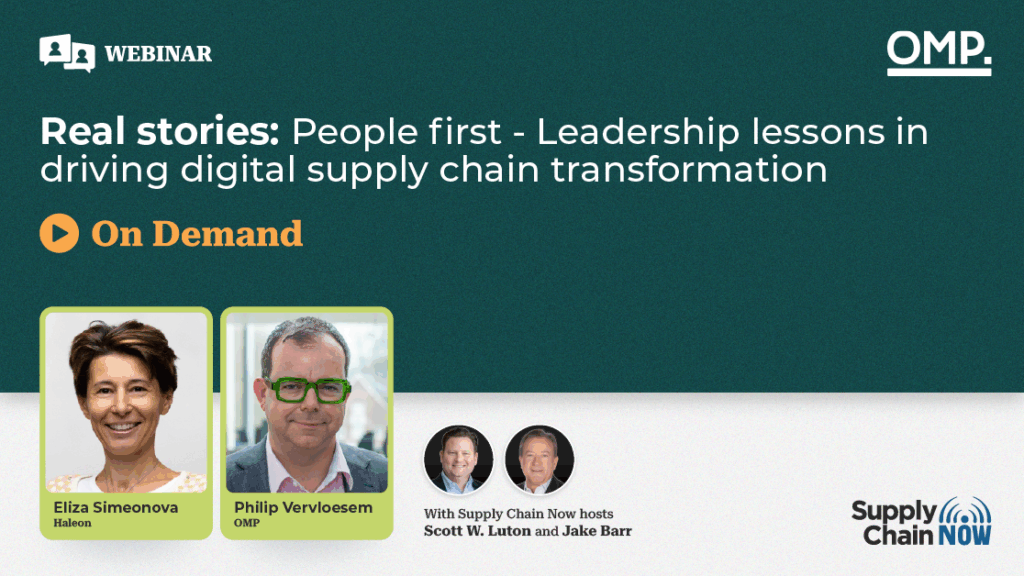
5 Things I Wish More People Asked About Supply Chains in Latin America
Special Guest Blog Post written by Demostenes (Demo) Perez, Photo by Rikin Katyal
After more than 25 years in logistics and supply chain management and having led over 200 regional distribution projects, I’ve come to realize that the questions people don’t ask are often the most important.
Throughout my career, I’ve worked with global multinationals, emerging brands, and family-run businesses. I’ve helped move everything from underground mining equipment to high-fashion goods, from pharmaceuticals and food to toys and chemicals. Some supply chain models I helped design are still thriving today; others were shut down after a few years. Many didn’t even make it past the drawing board.
In that time, I’ve had the privilege of collaborating with logistics professionals from nearly every corner of the world and making lifelong friends in the process. Yet no matter the company size or product type, I still wish more people would ask these five questions before launching or scaling their operations in Latin America:
1. How well do I understand the diversity within Latin America?
“Latin America” is often treated as a single market. It’s not. Logistics conditions in Mexico are completely different from those in Brazil. Colombia, Argentina, Peru, and Chile all have unique regulations, infrastructure challenges, cultural norms, and customer expectations. Even within countries, regional variations can derail an otherwise solid plan.
If you’re serious about succeeding in this region, the first question to ask is not “How do I expand in Latin America?” but rather, “How does each market function and how do I design a supply chain to support that?”
2. Am I balancing agility with control?
Companies tend to fall into two traps: either over-centralizing and stifling local flexibility or decentralizing to the point of losing oversight. The key is finding the right balance, retaining visibility and governance over your network while allowing local teams and partners the autonomy to move fast and meet customer needs. This is where resilient supply chains are built: at the intersection of structure and speed.
3. Have I underestimated the power of Panama?
This may sound like a regional bias, but I’ve seen firsthand how Panama, when leveraged strategically, can transform a company’s logistics performance across Latin America. With its world-class connectivity, dollarized economy, Free Zone benefits, and port infrastructure, Panama offers a unique value proposition for companies seeking a regional distribution hub. But a word of caution: Panama is not a magic button. It’s an enabler, but only when your strategy, systems, and partners are aligned to make it work.
4. Do I have the right people, not just the right partners?
Technology is vital, but people make it happen. Over the years, I’ve seen multimillion-dollar platforms fail because no one had the regional know-how to execute on the ground. On the flip side, I’ve seen lean operations succeed because a handful of experienced, proactive professionals knew how to navigate borders, bureaucracy, and relationships. If you want to succeed in Latin America, find people who know the terrain and empower them.
5. Am I committed for the long run?
Short-term thinking has killed more supply chain projects in Latin America than poor planning ever has. Yes, this region has complexity. But it also offers a massive opportunity if you’re willing to invest time, learn continuously, and adapt to shifting conditions. The companies that commit to a long-term vision, build trust with local teams, and align their logistics with commercial strategy are the ones that win. Latin America rewards consistency, not quick wins.
Final Word
I’ve spent decades working in this region, building, adjusting, and sometimes rebuilding supply chain networks across all types of industries. While each project is different, the foundation is always the same: ask better questions, and the right answers will follow.
If this article sparked your curiosity or if you’re navigating your own supply chain challenges in Latin America, I’d be happy to talk with you. And if you ever pass through Panama, reach out. Let’s grab a coffee, I’ve got a thousand more stories to share and hopefully ideas on how to support your business grow in Latam.
With 25+ years in logistics and supply chain management, Demostenes (Demo) Perez serves as CCO at IPL, helping global companies unlock th strategic value of Panama’s Logistics Hub to strengthen their distribution capabilities across Latin America. His career has been dedicated to designing resilient, customer-focused supply strategies that drive efficiency and growth. Connect with Demo on LinkedIn.
More Blogs

Leading Transformation in the AI Era: Why Digital Success Starts with People

